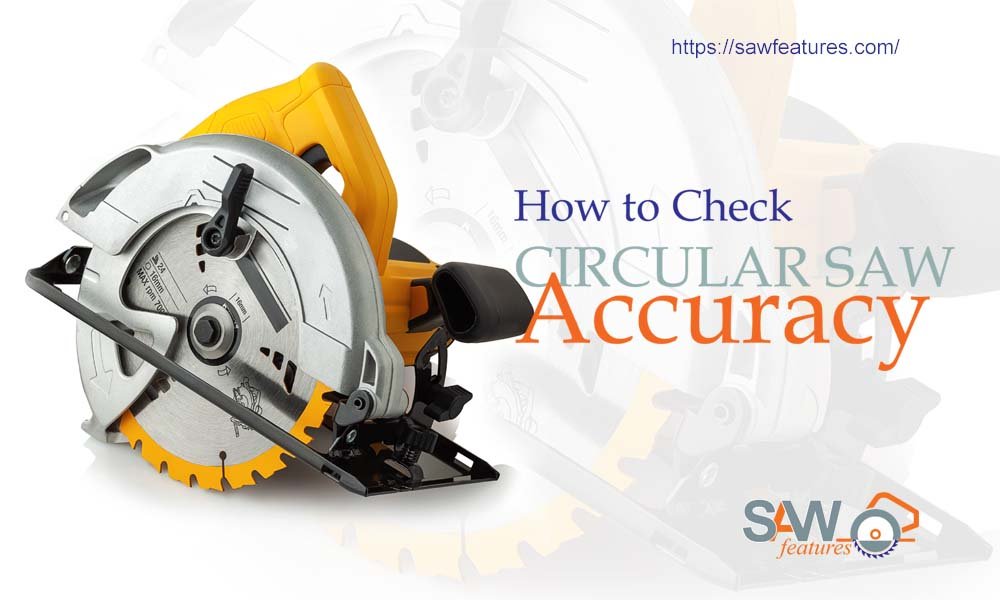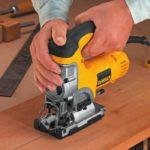The circular saw is one of the most versatile cutting tools, which is fast, convenient and efficient. Whether you want a saw for your small DIY project or a cutting tool for a big project, a circular saw can make your job easy in both cases.
And while doing the projects, the first thing you will want to achieve is accurate cuts on your material. Now the question arises, how to check circular saw accuracy?
If you want to know more about the circular saw, this article is for you. We have demonstrated the method of checking for accuracy and other details about the circular saw. So, let's get at it.
What is Circular Saw & Its Components?
A circular saw is a powerful tool that has a round blade in it to cut through solid objects. Some people confuse it with the ring saw and the hole saw because of the rotary motion, although these three tools are distinct from one another.
Depending on the types of blades, the cut will be dissimilar. A Circular saw can accurately cut a wide variety of solid materials, including steel, ceramic tiles, stone, wood, etc.
Let's get familiar with the components of a circular saw. There are some basic parts that almost every circular saw has. And there are a few parts that the most recent circular saws might have included or excluded from the body.
Here are the common parts of a circular saw.
- Power motor
- Base plate
- Blade
- Front grip
- Blade guard
- Trigger
- Bevel adjustment
- Depth adjustment
- Safety switch, etc.
The 4 Types of Circular Saws to Know
A Circular saw usually refers to the hand-held type. Among so many categories, we have brought only four common one’s for you. And they are as follows.
- Sidewinder Circular Saw
- Worm Drive Circular Saw
- Compact Circular Saw
- Track Saw
Now, let's know a little further about these types.
Sidewinder Circular Saw
In a sidewinder circular saw, the saw runs parallel to the motor. It can be both cordless and corded. The cordless version runs on battery power, whereas the corded version runs on the power supply.
This type of saw doesn't need any oil. Besides, this type is also lightweight and has a thinner shoe. And because of the wafer-thin shoe, you need to work carefully with this one. This delicate part should be used carefully.
Worm Drive Circular Saw
A worm drive circular saw is usually narrow and heavier compared to the other types. Here, the shoe is thicker and sturdier. If you notice the saw closely, you will see a few more extra gears as the motor changes its direction at the right angle to the blade. And for that, it needs oil to run in smooth motion.
Compact Circular Saw
A compact circular saw is just like a regular circular saw, but with a miniature version. From the blade to the motor, everything comes in a smaller form. And that's why it is quite lightweight.
Although it has all the functionalities of a regular saw, it can cover small projects only. Where the regular blade size is 7 and a 1/4 inches, the compact circular saw blade size is usually 4 and a half inches. So, if you are looking for a circular saw for any minor projects, go with this one.
| You can reach out to learn Compact Circular Saw used for
Track Saw
A track saw is commonly known as a plunge saw. The track system is the reason behind its naming. Here, the blade is enclosed, and the saw slide on the track to cut through the material.
Besides, the enclosed blade helps with dust extraction as well. This type of saw produces more accurate cuts and is safer to use.
What Cuts Can Circular Saws Make?
Here, we are going to discuss the five cuts that a circular saw can make.
Rip cut: "Rip cut" has a specific meaning in the world of carpentry. A rip is a cut that travels in the same direction as the wood grain. When you split a board from end to end, that means ripping. A track saw can rip a piece of wood with exceptional accuracy.
Plunge cut: If you need to cut a rectangular shape in the center of a board or sheet, the technique you can use is the plunge cut. Many might not know that you can make a plunge cut with a circular saw. All you need to do is implement the right technique.
Bevel cut: The bevel cut is a type of angled cut on the wood. You can adjust your circular saw to 45 degrees and make a bevel cut.
Cross cut: A crosscut is the opposite of a rip cut. A crosscut travels across the wood grain. For an accurate cut with the circular saw, it is recommended to attach a saw guide for precise cuts.
Cutting notches: A circular saw can be very useful when you want to use it for cutting notches in wood. This tool can make this cut in the quickest way possible without damaging the product.
What is circular saw Accuracy &
No matter what cut you are making with your circular saw, it won't be efficient if the accuracy level is low. And to achieve maximum accuracy, you need to pay enough attention to some factors.
The proper adjustment of the saw is necessary to receive the best outcome. As a circular saw is a hand-held saw, it is difficult to cut accurately without securing the product. So, secure the material, then adjust your circular saw and run through for an accurate cut.
How to Check Circular Saw Accuracy?
You can check the accuracy in multiple degrees. Let's see how to check the accuracy at 45 degrees and 90 degrees.
45 Degrees: For checking a 45-degree accuracy, you need to set the saw at 45 degrees against the shoe. After setting up the saw, put a mark on the piece of wood or sheet, and take your saw to let it ride on the line. Now, measure the angle of the wood and check if that is accurate or not. You will get an accurate result when measuring the angle in the wood rather than the saw.
90 Degrees: To begin, set the saw blade at a 90-degree angle to the shoe. Now, put a mark on the wood, lay it down on the sacrificing board, and run the saw through it.
Remove the saw while making a small cut and check the piece of wood against a straightedge to see if it has made a square cut. If not, then you can use tape to use it as a guide while cutting with the circular saw.
Circular Saw Maintenance Tips
A circular saw is usually maintenance-free as long as it is treated right and used correctly. But there are a couple of things that you can do to treat your saw in the right manner.
The basic maintenance of a circular saw is typically the same in all models. So, no matter what the configuration of your saw is, you can follow these steps in your circular saw.
- Check the power supply and the wires to ensure safety before using the saw.
- Make sure your blade is sharp enough to make a smooth cut on the material. A dull blade can make your cutting stressful.
- Before using the saw, ensure a smooth surface to prevent any problems with the blade.
- Last but not the least, add lubricant at least once a year for a friction-free operation.
Left-handed vs Right-handed Circular Saw – Which is Better?
First of all you should know how to use a circular saw. As a result this tutorial will help you better understand. To determine which one is better, we are going to compare them from the perspective of a right-hander.
A left-handed circular saw has the blade on the left side and the handle on the right side. And in the right-handed circular saw, the blade is on the right side, and the handle is on the left side.
So, if you are a right-handed person and using a right-handed saw, you won't be able to see where the blade is, and you'll have to follow the little nook.
But with the other type, you can see the blade directly and can take necessary action while working. So, we can say left-handed saw suits a right-hander better. And for left-handers, the right-handed circular saw is better.
Final Words
Using a circular saw can be risky for the amateur. And without having proper training and practice, you should not use this tool at any cost. To avoid any mishaps, put on a face mask and safety eyewear.
Safety gloves are an option as well, although they typically make users uncomfortable. Hopefully, this article has provided you with the information you need to determine how to check circular saw accuracy.
Now, solve your carpentry problems with this magic tool and keep creating something new.





